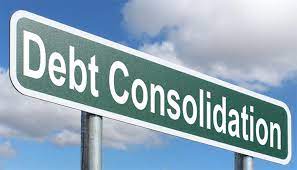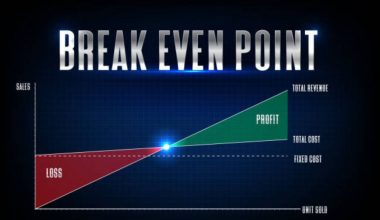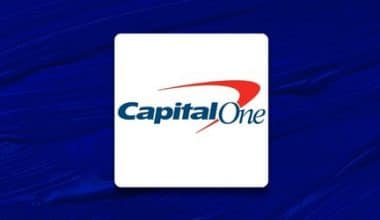Do you understand what cash receipts are? The gathering of money (cash) from your clients is known as cash receipts. A company’s cash on hand will grow as a result of these. Sales and receipts can both be sources. The concept of a cash receipts journal can be difficult to grasp for some. This is especially true for those who work in fields that don’t regularly interact with currency. Read further to know more about the examples and procedures of cash receipts. Enjoy the ride!
What Are Cash Receipts?
Sales transactions can only be verified with cash receipts. When you receive money from an outside source and increase your cash balance on the balance sheet, you should create a cash receipt to reflect this event. Doing so will guarantee a proper financial flow and, eventually, a profitable outcome. The use of cash receipts is also essential in preventing theft and fraud.
Certain information must be provided on a printed receipt for it to be considered a cash receipt:
- Date of Sale or Purchase
- The monetary value of the exchange
- A detailed explanation of the service or good
- Sales Volume
- The payer’s legal name or business name
- Whichever manner of payment was used (cash, check, or otherwise),
- The payer’s signature is required.
- A unique identifier
Examples of Cash Receipts
The date of the transaction, the person who accepted the cash payments, the source of the money, the receivable balance, and the amount received are all recorded in a Cash Receipts Journal, which is a sort of sales journal. It’s an essential tool for keeping tabs on cash flow and keeping an eye on how well your firm is doing financially. The format chosen for the Cash Receipts Journal will vary according to the type of business, the number of source documents, and the accounting system being used.
Some common examples of cash receipts are attorney’s fees, down payments on homes, and unused, refundable airline tickets. However, it is not limited to the provision of services that generates cash flow.
Additional examples of cash receipts include:
- The money received by a company when it sells products at the register is known as a cash receipt.
- Insurance claims are settled by the company and paid out in cash.
- Cash received from passengers is considered revenue for a taxi business.
Cash Receipts Procedure
An effective cash receipts procedure is essential to maintaining honest books. In order to keep track of your cash inflows, make sure no mistakes are made while recording transactions, and maintain accurate books, you need a system in place to handle CR.
Your cash receipts procedure should resemble something like this:
- Separate and file business invoices
- Keep track of your money and checks.
- Don’t forget to tally up any extra income that comes in.
- Make deposits of money
Sometimes, customers will pay you with a check or cash after some time has passed. A second diary entry must be made to account for such circumstances. The effects of these payments on outstanding bills and available shop credit must also be recorded. Make sure the amount on your deposit slip matches the amount recorded in your CR notebook if you intend to deposit cash payments. In case of any anomalies, you should keep your deposit slips with your other company receipts.
Also, remember that each company has its own methods for collecting payments. The aforementioned procedures can be modified to better suit the needs of your business.
When do You Need Cash Receipts
Any of the following methods of payment need the creation of cash receipts:
- Cash
- Check
- Get something with a credit card
When any of these three methods of payment result in a cash receipt, the cash account is credited on the profit and loss statement, and the cash account is debited.
In accounting for cash receipts, the owner’s physical or digital copy of the receipt is referred to as a source document. The proof that a sale was made and money was received can be found in the source records. Keep this paperwork in order to comply with tax regulations and back up your financial statements. These days, it’s most practical to keep one’s source files online. One copy can be easily kept with the sale if you utilize bookkeeping or accounting software. However, a second copy should be saved on the cloud for redundancy purposes.
Where Does a Cash Receipt Appear on a Financial Summary?
A rise in cash or another asset account indicates cash receipts in a financial summary. It all depends on the goods being sold. Accounts receivable is the section of a company’s books where cash payments for services sold are recorded. The manufacturing division’s output will have an impact on stock levels if those products are sold. Also, accounts receivable are the opposite of this. You have made a profit off of pre-existing items. When this occurs, the cash may be added to the company’s cash reserves or to another asset account.
How Do You Record a Cash Receipt on Your Financial Statements?
Here are the three procedures you need to take to properly record a cash receipt on your financial statements:
- Write down the whole amount of money you were paid for your goods or services, whether it was in the form of cash or a personal check. Increase your cash on hand by making a debit to accounts receivable and a credit to cash.
- Payment received for manufactured but unsold inventory should be recorded as a debit to inventory rather than a credit to accounts payable. Depending on the nature of the sale, the transaction would result in a negative for inventory and credit for either cash or accounts receivable. Production-related stock increases are accounted for as reductions in stock once sales have been recorded. This is not the same as a rise in cash flow.
- There are two things that must happen before product returns can be recorded on financial records. Taking them off the books simultaneously as an AR reduction and an AR stock reduction. Both accounts payable and cash are affected by the entry.
Description of the Row and Column Titles on a Cash Receipt
- Date: The day the sale is finalized and payment is made.
- Account Credited: The name of the account that was credited when the sale was made in cash.
- Reference: The account number in the chart of accounts to which the journal entry is posted.
- Explanation: Just a few words about the transaction being finalized.
- Cash Dr: The cash account has been reduced by the amount of the cash sale.
- Sales Discount Dr: The amount of any price reduction presented to the client.
- Accts Receivable Cr: The column where credit sales are recorded.
- Sales Cr: The corresponding debit in Sale Expenses for this transaction.
- Other Accts Cr: Any action that generates money but takes place less frequently than that, such as selling fixed assets, within an accounting period.
What Happens If a Cash Receipt Gets Lost?
The cash account on the balance sheet may be off, making it difficult to get an accurate picture of the company’s financial situation, if any CR is misplaced. An incorrect balance sheet might result in overstating profits and understating losses. Overspending and inaccurately predicting future cash flow are only two examples of how this could harm a company’s bottom line.
The position can be similarly hazardous for reporting tax purposes. Also, the IRS requires you to declare all cash sales. It is possible to underreport income on a tax return if CR is absent. Here are different paths to take if you are audited yet your sales remain consistent from month to month or year to year:
- Make an effort to predict your sales. Overestimating them is the safest bet.
- Offer proof of payments by presenting bank statements, receipts, photos, or emails relating to the transaction in question.
- Consult a tax professional for advice on how to stay out of trouble with the Internal Revenue Service.
What Role Does a Cash Receipt Play in Business?
No matter the industry, CR is crucial to all companies. Cash deposits should be recorded precisely so that a company can keep track of its profits and expenditures. It also speeds up the process by which a company may ascertain the total amount of money it has received from its clients.
Who Should Sign a Cash Receipt?
Each monetary transaction should result in two copies of a cash receipt, one for you and one for the consumer. The business will keep the original copy in its records. The cloned receipt is handed to the buyer as evidence of the transaction.
Why Is a Cash Receipt Important?
Cash receipts are a vital part of any business’s accounting system. For the purposes of compiling fiscal records and filing tax declarations, they prove to be invaluable. As an unambiguous record or primary document, CR can also be useful in settling disputes between purchasers and vendors.
A cash receipt is crucial for both financial and customer service reasons. Giving CR to clients shows a dedication to professionalism and openness, which can foster loyalty and confidence.
What are the Benefits of Cash Receipts?
The following are the benefits of a cash receipts journal:
#1. More Accurate Documentation
Keeping track of cash inflows and outflows is simplified with the use of a Cash Receipts journal.
#2. Better Control of Money Flows
Businesses can more easily control cash inflows and outflows by keeping track of cash receipts and identifying financial summary patterns.
#3. Tax Obligation
By providing verifiable documentation of income and expenditures, cash receipts aid businesses in meeting their tax reporting obligations.
#4.Resolving Conflicts
By offering a detailed account of the transaction, cash receipts can aid in settling disputes between a buyer and a seller.
What Accounts Are in a Cash Receipt?
Sales received in cash, by check, or with store credit all count as CR. Both the sales account in the profit and loss statement and the cash account on the balance sheet are affected by cash revenues from cash sales.
Is a Cash Receipt a Debit or Credit?
The collecting of cash from a consumer is recorded in an accounting item known as a cash receipt. The company’s cash balance on the balance sheet rises (is credited) whenever it receives cash. Both the receivables account and another asset account are credited as they are reduced.
Is Cash Receipts Accounts Receivable?
CR is the official acknowledgment of any monetary contributions from either internal or external sources. After deposits are made to the State’s General Checking Account (GCA), most CR is documented through the AR module in the Statewide Financial System (SFS).
What Is the Difference Between Cash Payment and Cash Receipt?
The primary distinction between a cash receipts journal and a cash payment journal is that the latter documents monetary transactions that result in a cash inflow while the former documents those that result in a cash outflow.
Final Thoughts
The income you receive for your business is known as cash receipts. Investments, interest payments, loans, and grants are all included in the cash receipts column, along with any other revenue the company receives. The estimated amount and timing of payments are included in cash receipts. Cash receipts can be recorded and used to better keep tabs on earnings and outgoings. This speeds up the process through which a company can ascertain consumer revenue. Your CR should come with two copies—one for you and one for the client. Verify that the person signing them has the proper authority to do so.
- EXPENSE RECEIPTS: What Is It, How to Make It & Best Apps
- How to Work a Cash Register in 2023: Best Practices.
- CASH BUDGET: How To Prepare a Cash Budget
- CASH BASIS ACCOUNTING: Definition, Expense Recognition & Basic Principle
- STATEMENT OF CASH FLOWS: Understanding the Statement of Cashflows with Examples






